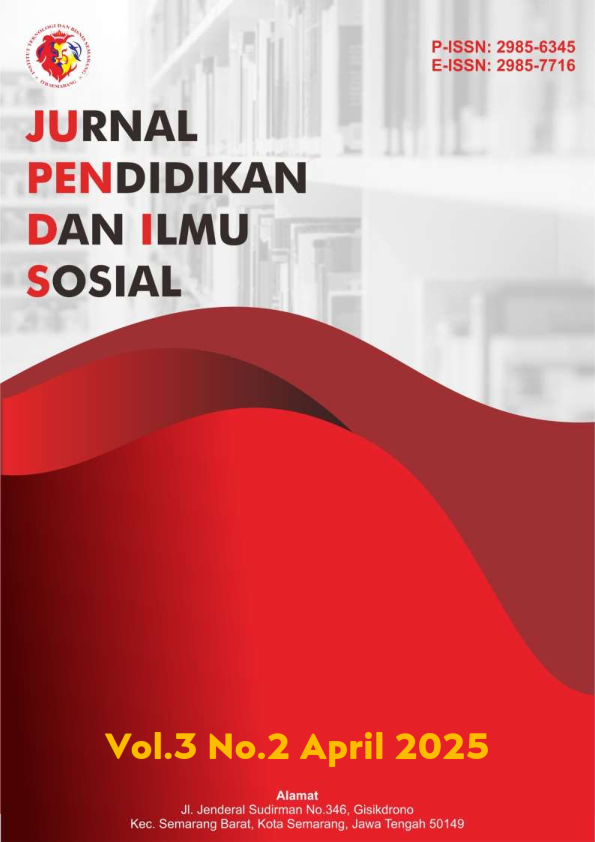Enhancing Speaking Confidence in Elementary Students through Task-Based and Communicative Approaches: A Community-Based Study at Rumah Tahfiz Daarul Uswah
DOI:
https://doi.org/10.54066/jupendis.v3i2.3214Keywords:
Communicative Language Teaching, ESL Learning, Interactive Learning, Speaking Fluency, Task-Based Language TeachingAbstract
Speaking fluency and confidence are crucial in second language acquisition, particularly for young learners who require engaging and interactive methods to enhance their communication skills. Traditional rote-based learning often fails to provide meaningful practice, leading to anxiety and lack of confidence in speaking. This study aims to evaluate the effectiveness of Task-Based Language Teaching (TBLT) and Communicative Language Teaching (CLT) in improving elementary students' confidence and fluency in speaking English. The research was conducted over eight sessions using a qualitative approach. Interactive teaching methods, including songs, roleplays, games, and self-description competitions, were implemented. Data were collected through observations and student progress evaluations, focusing on pronunciation, sentence construction, and fluency. The findings indicate that task-based activities significantly improved students’ confidence, fluency, and engagement. Initially, students faced challenges such as speaking anxiety, low participation, and disruptive behavior. However, through interactive strategies, they gradually overcame these difficulties. By the final session, most students demonstrated the ability to introduce and describe themselves fluently, showcasing the effectiveness of TBLT and CLT in ESL education. This study highlights the importance of student-centered, communicative learning approaches in fostering fluency and confidence in young ESL learners. The success of TBLT and CLT suggests that interactive, task-based instruction should be encouraged in ESL education to ensure learners can effectively use English in real-life situations.
References
Ellis, R. (2021). Task-based language teaching: Theory and practice. Oxford University Press.
Kolb, D. A. (2023). Experiential learning: Experience as the source of learning and development. Prentice Hall.
Larsen-Freeman, D., & Anderson, M. (2011). Techniques and principles in language teaching (3rd ed.). Oxford University Press.
Leonard, P. (2013). Developing confidence in second language learning: Psychological and pedagogical approaches. Springer Applied Linguistics Review, 8(1), 67–98.
Leonard, P., Supardi, M., & Hassan, T. (2015). Student-centered approaches in language acquisition. Routledge Studies in Language Teaching, 22(1), 101–128.
Lightbown, P. M., & Spada, N. (2023). How languages are learned (5th ed.). Oxford University Press.
Littlewood, W. (2014). Communicative language teaching: An introduction. Cambridge University Press.
Long, M. H. (2015). Second language acquisition and task-based language teaching. Wiley-Blackwell.
Nation, P. (2022). Language learning through communication: Strategies for success. Cambridge Applied Linguistics Journal, 45(3), 245–263.
Nunan, D. (2004). Task-based language teaching. Cambridge University Press.
Richards, J. C. (2022). Communicative language teaching today: Principles and applications. Journal of Language Education, 17(2), 112–135.
Supardi, M., & Leonard, P. (2010). Interactive teaching methods in ESL classrooms. Routledge Education Studies, 12(4), 321–345.
Thornbury, S. (2006). An A-Z of ELT: A dictionary of terms and concepts used in English language teaching. Macmillan Education.
Ur, P. (2012). A course in language teaching: Practice and theory (2nd ed.). Cambridge University Press.
Willis, J., & Willis, D. (2007). Doing task-based teaching. Oxford University Press.
Downloads
Published
How to Cite
Issue
Section
License
Copyright (c) 2025 JURNAL PENDIDIKAN DAN ILMU SOSIAL (JUPENDIS)

This work is licensed under a Creative Commons Attribution-ShareAlike 4.0 International License.







